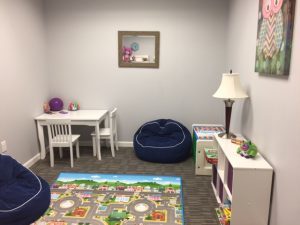Cyndi Turner's Blog, page 24
April 12, 2017
Medication Management
IIAT Philosophy on Medications and Psychiatric Disorders
Medication can play a pivotal role in helping address mental health concerns. Studies have shown that when appropriately prescribed and monitored, and when combined with therapy, medication can help significantly improve the outcome of many psychiatric and psychological conditions.
IIAT now has a board certified psychiatrist in the practice. Dr. Sumit Anand can offer advice about and prescribe medications for various mental health conditions ranging from anxiety to anger problems, as well as problem drinking.
Dr. Anand is part of the team of professionals at IIAT that collaborates in order to best meet your needs. This includes talking with you and your therapist to ensure that everyone is on the same page when it comes to what medications you are being prescribed and why.
Given recent media publicity about prescription drug abuse along with increasing concerns about unsafe prescribing practices, our philosophy at IIAT will always be to ensure that you are prescribed the appropriate medications and that your response is carefully monitored on a regular basis.
Medications for Anxiety and Depression
Anxiety and Depressive Disorders can respond well to several medications. Of these, the most commonly prescribed are the SSRI (Selective Serotonin Reuptake Inhibitors) medication class. Examples of this include Prozac, Paxil®, Zoloft® and Lexapro®. Other classes include the SNRI’s, such as Effexor® and Cymbalta®. Finally, there are the serotonin antagonists such as Remeron® or Nefazadone®.
Collectively, these classes of medications have provided symptomatic relief to millions for conditions such as panic disorder, generalized anxiety disorder, and social anxiety disorder. The eventual choice of medication will always be the result of a careful discussion between you and Dr. Anand in order to ensure the most favorable response. Everyone’s genetic make-up is different. A medication that works well for one person may not work for another.
When medications are prescribed appropriately, many people report significant improvements in symptoms such as worrying, depressed mood, restlessness, fatigue, as well as motivation and zest for life. With the help of our prescribing psychiatrist, you can mutually decide how long you will need to remain on your medication.
Next are the benzodiazepines. Many people will probably be more familiar with medications such as Xanax® (Alprazolam), Klonopin® (Clonazepam), and Ativan® (Lorazepam) that belong to this class of medications.
These medications are only recommended for very short-term relief of extreme anxiety, never as a long-term treatment option. They require a specially written prescription because they are known to be addictive and have been known to be overused and sometimes abused. Research indicates that many people have been inappropriately continued on these medications for years, and that they are now likely both physically as well as psychologically dependent on them. Unfortunately, they do nothing to improve the long-term outcome of chronic anxiety.
IIAT’s philosophy is to avoid prescribing of benzodiazepines altogether. We believe in using the appropriate, non-addictive medications that have proven themselves effective for long-term treatment. If you happen to be on a benzodiazepine, Dr. Anand can work with you to slowly taper you off such a medication and find other options that are more appropriate for you in the long run.
Anger Problems
Anger problems are increasingly receiving attention. Current diagnostic classifications have proven inadequate to describe this increasingly common behavioral problem.
While there is no specific medication designed for anger, getting to the root cause can help guide the choice of medications. For example, if a depressive or anxiety disorder is severe enough it can make some people very irritable, and even explosive. SSRI’s can help dampen down such irritable and reactive moods.
For those who are not depressed, anger usually arises when some sort of trigger “presses the buttons.” In that case, a combination of therapy and mood stabilizing agents can prove to be quite effective. Examples of mood stabilizing agents would include Depakote®, Trileptal®, and Lithium. For others, low doses of agents such as Seroquel®, Risperdal® and Abilify® can also help make the mood less reactive and more even- tempered over time. In general, no “magic bullet” exists for anger disorders. However, if the goals of treatment are realistic, such as to reduce the frequency and intensity of anger outbursts, then significant improvement can be expected when medication is added to regular therapy.
Problem Drinking
While the term alcoholic remains vague and even stigmatizing, many people will attest to difficulty in controlling the amounts they drink. They may also drink more days per week than they want, even if they do not drink daily. Such patterns are now classified under the terms alcohol use disorder. Medications along with therapy can again play a crucial role in decreasing cravings as well as helping to reduce the amount of alcohol consumed in one sitting.
Of these, Naltrexone (Vivitrol®) is known to blunt the pleasurable sensations that lead to wanting to drink more once a person has begun drinking alcohol. It has been proven effective in helping people to moderate their alcohol use in one sitting.
For those who have had a known dependent pattern of drinking, and who now intend to maintain complete sobriety, Acamprosate (Campral®) has been proven to delay the number of days to relapse into dependent drinking, as well as to limit the severity of the relapse, if it occurs. Again, the most effective results have occured in those who also participate in some form of therapy.
Medications when properly chosen, dosed, and monitored play a crucial role in helping people make a recovery from their psychiatric or psychological problems. As has been repeatedly shown, the best results are always likely when medication is combined with effective therapy.
A last word: for many, medications are seen as a panacea or “magic bullet.” Most psychiatrists will tell you that these are unrealistic, though understandably human, expectations. At IIAT we will take the time to explain what to expect from medications and what not to expect, so that realistic treatment goals can be achieved. In addition, we use medication combinations with the safest but most effective doses in mind so that you get the maximum possible benefit.
Dr. Anand is a psychiatrist with Insight Into Action Therapy. He is available immediately for one-hour evaluations and half hour medication monitoring appointments. He will not rush your diagnosis or treatment. You can reach Dr. Anand at 703-646-7664 ext. 12 or sanand@insightactiontherapy.com.
March 30, 2017
Men and Alcohol: More Does Not Necessarily Mean Better
March 7, 2017
An Alternative Way to Resolve Conflict
People deal with conflict most every day. Many of them turn to litigation and the use of the legal system to resolve disputes. But the court system costs too much, takes too much time and involves uncertainty, loss of privacy and an adversarial win-lose mentality. Frequently, the outcomes from the judicial system do not work effectively for most people especially when the dispute is between people who are in long lasting relationships like family members, business colleagues and community members. That’s why more and more people are turning to mediation as an alternative way to solve problems.
Mediation is a dispute resolution process where the mediator acts as a neutral third party and facilitates a discussion between the disputants. In mediation, the process is tailored to the needs of the parties and the issues being discussed. The mediator helps the parties identify the issues and frames the dispute as a mutual problem to be solved. With the help of the mediator, the parties analyze information, evaluate options, and explore mutually acceptable solutions with a focus on what they will do in the future rather than what has happened in the past. There are numerous benefits to using mediation to resolve conflict:
*The parties decide the outcome and customize their agreement to fit their needs;
*The discussions during mediation are confidential; and
*The parties control the schedule, and mediation is more cost effective than litigation
Many types of cases are appropriate for mediation, including:
*Separation and Divorce (support, custody and division of property);
* Business Disputes (contract, landlord/tenant and small claims);
* Family Matters (elder care, estate matters, and parenting issues);
* HOA and Community Issues (HOA disputes, land use decisions and strategic planning)
Next time you find yourself embroiled in conflict, consider mediation as a constructive way to solve your problems.
Susan Buckley is a Virginia Supreme Court certified mediator and owns Center Mark Mediation, LLC in Ashburn, Virginia. She also serves on the Executive Board of the Virginia Mediation Network.
March 2, 2017
What is Emotionally Focused Therapy for Couples?
The foundation of Emotion-focused therapy is based on the work of Drs. Leslie Greenberg and Robert Elliot. While their focus was looking at the emotions of the person, their therapeutic intervention was designed for individual or one-on-one therapy.
Emotionally Focused Therapy for Couples (EFTC) was born out of the 1980s work and research of Dr. Sue Johnson with Dr. Greenberg. EFTC is an integration of the humanistic and experiential psychological perspectives. The intent in the blending of these approaches is to restructure the emotional experience of those in the relationship. Emotionally focused therapy combines techniques from Carl Roger’s person-centered therapy with a scientifically validated theory of adult bonding. The goal is to help couples understand not only their own emotions, but also how back-and-forth patterns of emotional reactions operate in and affect relationships.
Whether applied within the context of couples or family therapy, this scientifically proven method focuses on improving the bond associated with Attachment theory. Because none of our experiences are identical, it is through secure relationships that we can be guided towards connections and our happier and healthier selves. So what distinguishes EFTC from Imago and Gottman therapy?
The Gottman Method , developed in the 1980s by Dr. John Gottman and his wife, Dr. Julie Schwartz Gottman, helps couples communicate and bond by identifying their defense mechanisms. This method uses a couples’ conflicts to improve communication and bonding through interventions aimed at creating understanding, awareness, and empathy to “master” the conflict.
Imago, which derives from Latin meaning “image” was crafted out of the work of Dr. Harville Hendrix and Dr. Helen LaKelly Hunt. The theory of Imago Therapy is that our relationships are the unconscious connection to our childhood experiences. The re-emergence of conflict indicates unresolved issues that impede the growth of the individual and the relationship. The Imago Dialogue helps transform the relationship process from blame and reactivity to understanding and empathy.
Why Emotionally Focused Therapy for Couples?
EFT goes directly at the emotion or distress because it is the problem, not the conflict. Though content is important, it is not the primary focus. Therapy does not negotiate your emotions or the details. The theory is that it is the individual’s deeply rooted fears of abandonment that contribute to the distress in intimate partner relationships. Emotions are the foundation of positive, secure, and lasting connection in any relationship, from intimate partners to family members. EFTC focuses on the insecure attachment that is felt within the relationship. We work with you to create a safe atmosphere within the relationship that allows for your vulnerability. Much of this begins with understanding the interaction or dance between the partners. It’s this pattern that keeps the relationship in a cycle that impedes compassion and understanding for one another’s emotional needs.
We found this method to be very effective. Couples report preferring this type of therapy because it gets them beyond the details of the argument, allowing them to connect on a more emotional level. This opens up the possibility for a deeper intimate relationship.
Congratulations to Craig James, LCSW, MAC for completing his externship training in Emotionally Focused Therapy for Couples (EFT) through the Washington-Baltimore Center for EFT. He and Julie Fender, LPC, CEAP are EFT trained therapists. They are planning on conducting a weekend intensive couples therapy workshop in early 2017. If you are interested, please contact either of them by email at jfender@insightactiontherapy.com or cjames@insightactiontherapy.com
February 20, 2017
The Right Kind of Alcohol Treatment
Check out Cyndi’s article on Psych Central Professional entitled, The Right Kind of Alcohol Treatment.
February 15, 2017
Love All Year Long
The flowers have wilted and the candy is gone. Another Valentine’s Day is over. Would you like to give a gift that will say, “I love you “ all year long? We can do that by learning to speak our partner’s love language. Gary Chapman coined the term in his book: The Five Love Languages: The Secret to Love that Lasts. This is a wonderful resource for a deeper look at the topic.
In my work as a couples counselor, I often encounter people who feel they are working harder in the relationship than the other. The irony is that often the other person feels the same way. We often instinctively give what we would want to receive. This is what the Golden Rule tells us, right? In relationships I like the Platinum Rule: Give as the other wants to receive. A healthy relationship does require effort. To get the best return on your investment of time and effort, speaking the right love language is the way to go!
Below are the five love languages. Simply put, our love language is how we feel the most loved or cared for. Most of us have more than one. Which one sounds like you?
Words of Affirmation: Examples are verbal compliments to express love and admiration. Do this by writing love letters, brag to others about your partner, tell him or her what you love and appreciate, offer a sincere apology after an argument.
Acts of Service: Any act that eases the burden or responsibility of the other. Do a least favored task, fill their car up with gas, pick up their dry cleaning, let them sleep in, make dinner. This is also expressed by making behavioral changes your partner has requested.
Quality Time: Focused and undivided attention and time spent together. Do this by turning off electronics and not multitasking. Plan a date night or go for a walk. Make eye contact and don’t interrupt while he/she is talking.
Giving Gifts: These are tangible symbols of your thoughtfulness and effort. Do this by making birthdays and anniversaries special, surprise him/her with a favorite treat or token gift. It’s not the cost that matters. It really is the thought that counts.
Physical Touch: Non-sexual touch that reinforces your presence and affection. This is expressed by holding hands, hugging, cuddling, sitting close to one another, or offering a massage.
I encourage couples to read over this list and identify their love languages. We need to let the other know how to best love us and let go of any assumption that they should “just know.” When we speak our partner’s love language, we ensure that they feel loved in the way that is most important for them. In doing so, we work smarter, not harder to build lasting loving relationships.
Julie Fender, LPC, CEAP is a couples expert with Insight Into Action Therapy. She helps relationships get beyond the fight by understanding the emotions that get in the way of effective communication. You can read more about her at jfender@insightactiontherapy.com.
February 8, 2017
Playing to Heal: 5 Benefits of Play Therapy
There is a reason your child spends so much time playing: play is the way that children learn and develop, understand the world around them, and express their feelings. In play therapy, a trained therapist will use your child’s natural tendency toward play to help them process complicated emotions they may not otherwise be able to express and help them develop skills that will help them succeed in life. Here are five of the most important benefits your child will receive from play therapy.
1. The ability to process emotions that they may not be able to express in other ways
Children do not always have the language skills to convey what they are feeling in words, especially if they experience traumatic events at very young ages. Instead, they may express their pain in ways that are undesirable or maladaptive, such as exhibiting defiance, having severe tantrums, crying frequently, becoming socially withdrawn, being unusually clingy, or refusing to attend school. In play therapy, the therapist provides children with a more adaptive method of express themselves – the language of play. Play therapists are specially trained to understand, interpret, and respond to children’s play communications and to increase parents’ abilities to “talk” to their children through play
2. A decrease in undesirable behaviors and an increased capacity regulate their own behavior
Once children begin to express their feelings through play, you will begin to see a decrease in unwanted behaviors. Further, play therapy will help your child develop skills that allow them to manage their own behaviors. In the play therapy sessions, your child will be given opportunities to test limits in a safe environment, allowing them to increase their awareness of the consequences of their actions. For example, your child may choose to smash their clay creation, but will then learn that once they have destroyed what they made, they will no longer have it. These lessons teach children to make thoughtful decisions.
3. Development of independence and creative thinking
Children often spend a large part of their day being told what to do. Of course, this is necessary, as there are many decisions that children cannot yet make for themselves. However, it is also crucial that children learn to think for themselves. This is especially true for children who are emotionally vulnerable or have experienced traumas or significant life changes, as they may feel an acute lack of control over their lives. In play therapy, your child is the leader. For the most part, they control what happens in the room by selecting the activities that they participate in. Play therapy provides your child with the opportunity to make choices for themselves in a supportive environment. The play therapy room is a nonjudgmental space where your child can express him or herself freely.
4. Improvement of social skills and the ability to respect others
Play therapy is about your child, but it is also about your child’s relationship with the therapist. In the trusting relationship that your child will develop with their therapist, your child will have the opportunity to test out different aspects of social interactions with the therapist without fear of permanently damaging the relationship. For example, your child may choose whether to cheat during a board game to explore how the therapist will react, and the therapist can explore this choice with your child. The toys in the play therapy are also specially selected to allow your child to explore different social roles, such as nurturing baby dolls or dressing up as a police officer. Play therapy will help your child to understand the thoughts and feelings of other people, and this understanding will transfer over to relationships with family and friends.
5. Stronger relationships with family members
Although the play therapist is a trained professional, they are not the most important person in your child’s therapy. YOU are the most important person in your child’s therapy, and the most important person in their life! Although you may not be in the room while therapy takes place, you will be an active participant in your child’s therapy by bringing them to sessions, meeting with the therapist as needed, and supporting your child in implementing the skills they learn in therapy at home. One of the most important goals of play therapy is to make your relationship with your child the best it can be. It can be very difficult and stressful to parent a child who is exhibiting distress. Play therapy will reduce this distress, providing you with more opportunity to simply enjoy spending time with your child.
If you would like more information about play therapy and whether it is appropriate for your child, the Association for Play Therapy’s Parents Corner is an excellent resource.
Danielle Rothman, Psy.D., is a licensed clinical psychologist at Insight Into Action Therapy , where she provides therapy and psychological testing. She can be contacted at (703) 646-7664 ext. 11.
January 31, 2017
But It Doesn’t Hurt!
As a dentist, I hear this expression often. People use it as their reason for skipping their recare appointments, not wanting dental x-rays, being surprised that they have a cavity, and especially when they’re told they have periodontal disease (gum disease). I find analogies to be a great learning tool. I respond by saying that high cholesterol or blood pressure doesn’t hurt until someone suffers a heart attack, diabetes doesn’t physically hurt until someone starts having numbness in their limbs. Another great analogy to consider: If your hands bled when you washed them, you would be concerned. Yet, many people think it’s normal if their gums bleed when they brush or floss…but it isn’t! Periodontal disease is the number ONE cause of tooth loss in adults! So, you ask: what is it and how do I avoid it?
The first opponent is plaque. It’s the sticky substance that forms on your teeth after you eat and gives teeth that “fuzzy” feeling. If plaque is not removed several times a day, by brushing and flossing, your gums will become swollen and bleed easily. This is the earliest stage of gum disease known as gingivitis.
If your oral hygiene slips or you miss your dental visits, plaque continues to build up on teeth. If it sits too long it becomes hardened and calcified and creates the next opponent—calculus, also referred to as tartar. Now, bacteria are smart…they know how to fight battles. Their next move is to “hide in the trenches” below your gumline where they are protected because your toothbrush can’t reach down that far! All alone down there they continue to multiply, creating a more serious infection. They become mini “Pac-men” eating away at the supporting structures for your teeth—the ligaments that attach your teeth to the surrounding gums and bone, and the bone itself.
As the Pac-man party continues, your gums begin to swell and detach from the tooth creating a space or “pocket.” This vicious cycle continues. Pockets get deeper, bone loss progresses, and it eventually leads to tooth loss. After getting the disease under control, you will need to see your dentist on a more frequent basis. The usual “every 6 months” it is not suitable for everyone and it’s easier to stay ahead of the game than to try to catch up. This makes the old saying seem quite true: “An ounce of prevention is worth a pound of cure.”
There are other incentives when it comes to preventing gum disease. Your mouth is the gateway to the rest of your body—the healthier you keep it, the healthier the rest of your body and the less bacteria there are to enter your bloodstream. Studies are now showing definitive correlations between gum disease and major health issues. Gum disease doubles your risk of dying from heart disease and triples your risk of death from a stroke! It increases your risk for diabetes and Alzheimer’s, and contributes to low birth weight and premature
births in pregnant women. One recent study has even suggested significant insight into a major villain—cancer. Several types of cancer were found to have a particular bacterium that is ONLY found in periodontal disease! Obviously much more research is needed, but there are compelling reasons why it is important to have good oral health and how it affects overall body health.
Periodontal disease can’t be discussed without mentioning another great opponent—smoking. The findings are very clear and concise. Smoking increases your risk of gum disease. The longer you smoke and the more you smoke, the higher your risk. If you already have gum disease, smoking makes it more severe. And, smoking is the main cause of gum disease that is resistant to treatment!
If we go back to the basics, the main goal is simply to not let plaque accumulate. As much as you hate to hear it, BRUSH, BRUSH, BRUSH & FLOSS, FLOSS, FLOSS. Just like acclimating to a new fitness regimen where the soreness fades away, the same can be said for oral health care. If you use an electric brush twice a day and floss only once a day, properly, your gums will toughen up, stop bleeding, and any soreness will disappear. Then you know you’ve reached a healthy state, and then you can properly say “but it doesn’t hurt!”
—–Dina Bambrey, DMD
Dr. Dina is a NoVA native who provides care in all facets of dentistry and has been recognized as one of America’s Top Dentists since 2009. She has a special affinity for providing care to children, those with special needs, and the elderly. She is always welcoming new patients and invites you to visit her website www.dr-dina.com or call 703-726-9119.
January 24, 2017
LGBTQ ABCs
In my years of providing therapy, I have encountered many different acronyms and terms. Some of them I understood immediately, while I pretended to understand others. The LGBTQ community contains a lot of terminology and acronyms that are frequently misunderstood. In hopes of raising awareness and creating a more understanding culture, I have created the LGBTQ ABCs. This list is not comprehensive, so please feel free to share to any terminology that should be on the list!
In developing this list, I consulted the wonderful and incredibly informative website www.itspronouncedmetrosexual.com to ensure accuracy with these definitions. However, I had a difficult time finding terms for the letters K, X, and Y. As a result, there are extra terms under the letters A, Q, and T.
A Androgynous: a means of gender expression with masculine and feminine features
A Ally: a person who is a friend and supporter of the LGBTQ community; often has a deep respect for LGBT individuals and advocates for LGBTQ rights
B Binary: in terms of gender, the theory that gender is only male and female
C Cisgender: an individual whose biological sex and gender identity align; often shortened to just “cis”
D Drag Queen and Drag King: one who theatrically performs in a feminine (Drag Queen) or masculine (Drag King) manner
E Emotions: a conscious reaction, or state of feeling, toward a stimulus
Obviously, emotions are not isolated to the LGBTQ community. I selected the term emotions as a reminder that all of us experience a wide variety and very similar emotions, regardless of our gender identity.
F Fluidity: describes identity or gender that can change over time; i.e. gender fluidity means that a person flows from masculine to feminine, some days feeling more masculine and others more feminine
G Gender Binary: the theory that only two genders exist (male and female) and each person must identify as one or the other, and nothing in between
H Hermaphrodite: outdated medical term referring to an individual born with both masculine and feminine sex traits; the more accurate term is Intersex
I Intersex: a term that describes individuals whose chromosomes, gonads, internal sex organs, hormones, and genitals differ from the anticipated male and female patterns
J Jazz Jennings: phenomenal transgender teenage girl who documents her journey on her reality television show, I Am Jazz
L LGBTQQIAAP: acronym for Lesbian, Gay, Bisexual, Transgender, Queer, Questioning, Intersex, Asexual, Allies, and Pansexual
M Metrosexual: term for a male whose interest and time spent on grooming and appearance goes beyond what is considered gender normative
N Nonbinary Gender: a term that encompasses all expressions of gender that reach beyond the scope of binary gender
O Outing: the unwanted and/or unsolicited announcement of an individual’s gender identity, orientation, or intersex status
P Pansexual: an individual who experiences romantic, sexual, spiritual, etc. attraction to individuals of all gender identities and expressions
P PGP (Preferred Gender Pronouns): often discussed and used during introductions; some options include him, his, her, hers, their, theirs, ze, and zir
Be sensitive to the PGP, as using the incorrect pronoun can be stigmatizing, insulting, and traumatizing
Q Queer: an umbrella term used to describe a person or people who do not identify as straight
Please note that not all individuals are comfortable with the word Queer. If a person finds the word derogatory, please use a word of their choice.
Q Questioning: an individual who unsure or is exploring their gender identity or orientation; can also refer to a time frame of self-exploration
R Romantic Attraction: the emotion any person has for another that creates the urge to date, marry, raise children, spend life together, etc.
S Sexual Preference: the type of sexual intercourse or gratification that a person likes to participate in and receive; Often confused with Sexual Orientation, which is a label used to describe the person and orientation that one is attracted to
T Transgender: individual who identifies as a gender other than that assigned at birth
U Understand: we all know what it means to understand. In this context, I encourage everyone to understand how a person identifies and how you can respect that identification. Be sensitive to the pronouns, names, and language an individual prefers. If you are unsure, ask!
V Violence: identifying as LGBTQ increases the risk of being a victim of violence exponentially. For more information, please read http://www.hrc.org/resources/hate-crimes-and-violence-against-lgbt-people.
W United States v Windsor (2013): In this Supreme Court case, it was decided that the 1996 Defense of Marriage Act (DOMA) was unconstitutional and removed individual states’ ability to define marriage. In addition, the Supreme Court ruled that DOMA violated the rights of the LGBT community to marry. It was the first case regarding the issue of gay marriage to be heard by the Supreme Court.
Z Ze/Zir: gender neutral pronouns that are preferred by some transgender people
I hope that this list is useful! It is meant to introduce new terminology in an easy to read manner, and help readers to use correct the correct language so that we all can respect the amazing LGBTQ community.
Tara Soligan, LPC, MAC, NCC, has spent the majority of her career helping clients struggling with addictions. Over the past few years, Tara has been expanded her knowledge of the LGBTQ community by participating in trainings, taking courses, and increasing her work with transgender clients and their families. Currently, she is accepting clients struggling with gender identity, individuals with substance use disorders, and young adults working to carve out a path for their future. Tara can be contacted at tsoligan@insightactiontherapy.com.
December 20, 2016
Making a Plan for Family Media Management
The holiday season is almost here, and in many households that means festively-wrapped packages full of brand new phones, tablets, and other media devices. The holidays also brings school breaks, and with them an abundance of free time that kids – and parents – are sure to fill by spending lots of time playing with their new tech toys.
Digital devices are an integral part of our daily lives and technology has many amazing benefits. It allows children to keep in regular contact with faraway friends and family members, offers kids with disabilities methods of communication and social connection that they would not otherwise have, and gives students access to unparalleled amounts of information at their fingertips. However, an American Academy of Pediatrics study published just a few weeks ago highlighted the risks of allowing kids too much access to technology. The following are some of the hazards the study identified:
Beginning in early childhood, excessive media use (typically defined as more than two hours of use per day) is linked to a risk of obesity and cardiovascular problems.
Media use results in fewer minutes of sleep per night and increased sleep disturbances. For example, late-night media use and higher numbers of devices in the bedroom are tied to poorer sleep quality in teens and preteens.
Certain types of media may reinforce gender-role and racial stereotypes, negatively impacting girls and children of color.
Cyberbullying can be particularly difficult to escape since the bullying can occur even when children are in their own homes and can result in academic problems, negative social consequences, and increased risk of suicidal ideation.
Online activity exposes children to exploitation posed by sex offended and child traffickers, and parents underestimate the risk of their child engaging in online conversation with strangers.
Balancing the pros and cons of media usage is a constant parenting challenge. One solution is to develop a Family Media Use Plan, as recommended by the American Academy of Pediatrics and discussed in this weekend’s New York Times article, When Tech is a Problem Child. A Family Media Use Plan is list of rules that you and your children can develop together that clarifies when, where, and how your family can (and cannot) use technology devices, and includes measures to ensure that media is used safely.
Your Family Media Use Plan should take into account your family’s specific needs – if your child has a real talent for coding, you may need a different plan than a family in which most technology time is spent on social media. A great starting point is to make use of HealthyChildren.org’s Family Media Use Tool, which breaks the plan into the following areas:
1) “Screen Free Zones”: Where can you use devices in your home? Where are they not allowed? Will devices be allowed in bedrooms overnight?
2) “Screen Free Times”: Can devices be used during meals or while doing homework? Can your children bring their devices to school? Can you use your phone while driving?
3) “Device Curfews”: What time must devices be turned off at night? In which room will devices be charged overnight?
4) “Choose & Diversify Your Media”: What types of media will your family use? How much of permitted media time will be spent on educational media versus social media versus game-play? How much time will be spent using media together versus solo media time?
5) “Balancing Online & Offline Time”: What non-screen time activities will your family enjoy together? What other hobbies can your child pursue?
6) “Manners Matter”: What etiquette rules will apply to media use in your family? Can you answer a text while in a conversation with someone else? Can devices be on the table during dinner?
7) “Digital Citizenship”: How will your family respond to online bullying? How can you respect the privacy of others online?
8) “Safety First”: What types of information are safe to share online? For which types of online activities will your child need your permission or supervision? What should your child do if they receive messages that make them uncomfortable?
9) “Sleep & Exercise”: How will your family members ensure that they get enough sleep? How can each of your family members make sure they engage in one hour of physical activity every day?
Before the New Year arrives, resolve to sit down with your family and develop a Family Media Use Plan that will allow your family to enjoy the positive aspects of technology without experiencing the negative consequences of overuse. Remember that the best way to get your children to stick to your family’s plan is to model healthy technology behaviors for them, and that this plan also applies to you. This holiday season encourage your family to take a break from digital devices and have some real-world fun together – and then enjoy posting holiday photos on Facebook guilt-free!
Danielle Rothman, Psy.D., is a licensed clinical psychologist at Insight Into Action Therapy, where she provides therapy and psychological testing. She can be contacted at (703) 646-7664 ext. 11.









